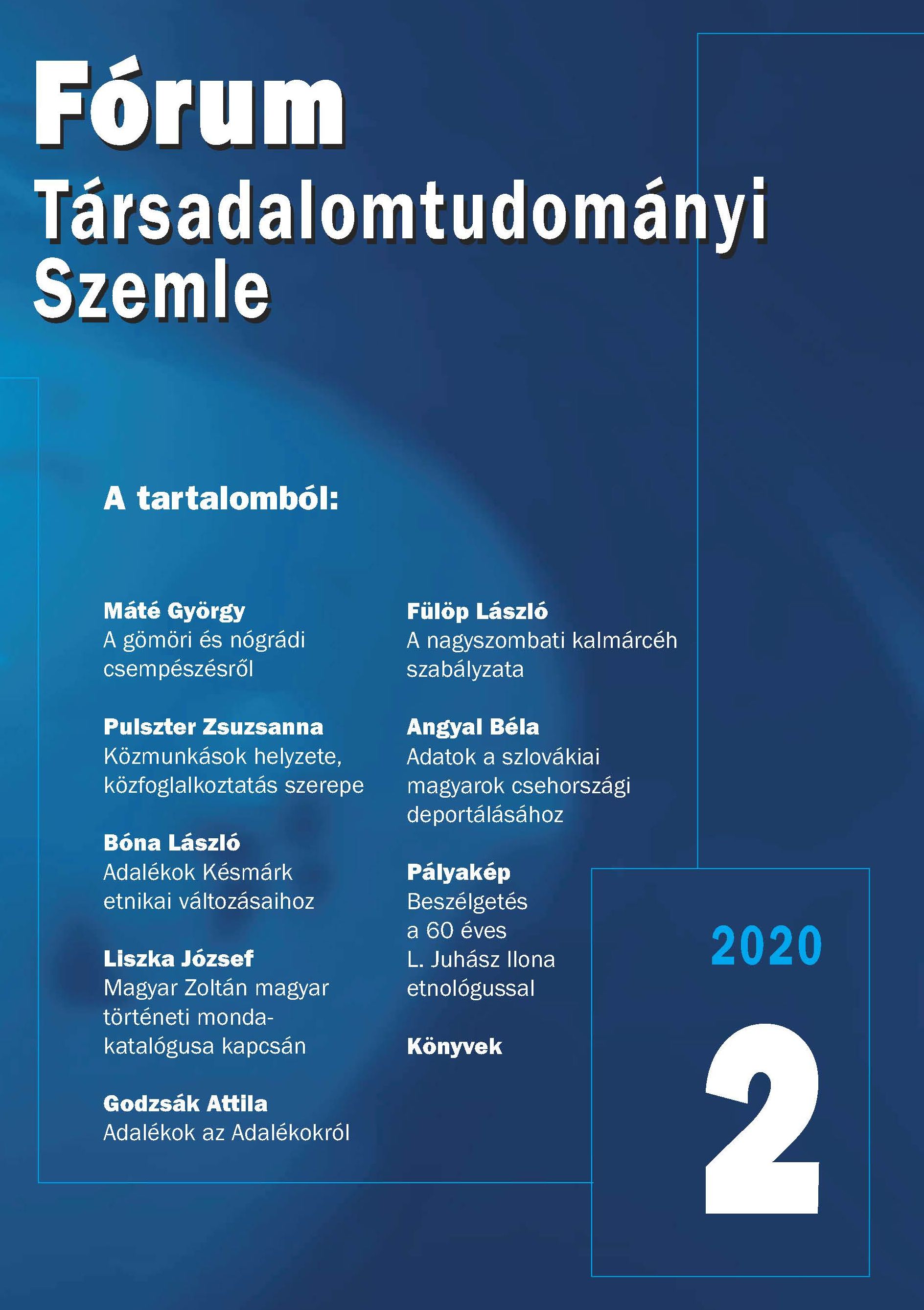Megélhetési kényszer, alkalmazkodási forma vagy tudatos vállalkozás?
A Livelihood Compulsion, Form of Adaptation or a Calculated Enterprise?
On Smuggling in Gömör and Nógrád
Author(s): György MátéSubject(s): Local History / Microhistory, Interwar Period (1920 - 1939)
Published by: Fórum Kisebbségkutató Intézet
Keywords: smugglers;smuggling;smuggling gangs;Trianon borders;Gömör;Gemer;Nógrád;Novohrad;Medvesalja;Pod Medvešom;Hangony-völgye;Hangony Valley;illegal trade;animal smuggler;exciseman;Baťa;flint;saccharin
Summary/Abstract: After the demarcation of the Trianon borders, smuggling became widespread in the 1920s and 1930s and it was noticeable until the late 1950s. Many of those living near the borders took part in this illegal activity, most actively along the Ipoly (Ipeľ) river, in the Bodrogköz (Pobodrožie) region, or in Gömör (Gemer) and Nógrád (Novohrad), for example. The study focuses on the latter two areas. Historical and ethnographic writings on the subject have been written in the past, which summarize its essential parts well. Knowing these, we also undertake to reveal further details and background information about the smuggling, which we underpin with a review of the contemporary press material, archival research and on-site collections.
Journal: Fórum Társadalomtudományi Szemle
- Issue Year: XXII/2020
- Issue No: 2
- Page Range: 3-30
- Page Count: 28
- Language: Hungarian

